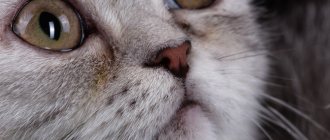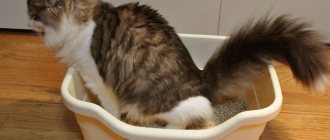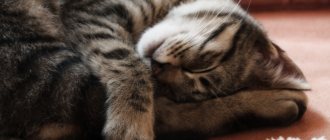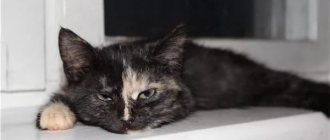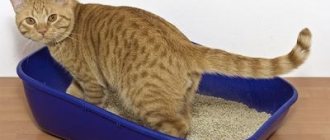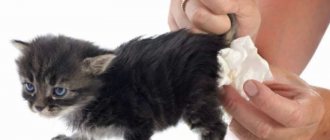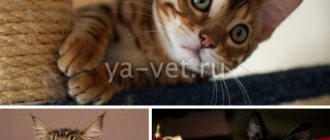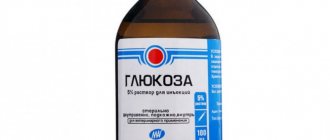13278Pavel
Smecta is rightfully considered one of the most effective drugs that helps a person cope with diarrhea. However, for the felines he became an equally loyal friend. The main thing is to learn how to correctly calculate the dosage. Moreover, you can understand how to give Smecta to a cat by carefully reading just one article. Intestinal upset is not a rare disease for your beloved pet. There is always a reason for diarrhea. It could be something unsuitable for food, obtained on the street, or a stolen piece from the table. In any case, Smecta will be the salvation.
When is smecta used?
Smecta is used for diarrhea, pain in the gastrointestinal tract, esophagus, bloating, and poisoning to reduce the absorption of toxins and irritation of the mucous membrane.
Acute and chronic diarrhea (allergic, drug origin; in violation of diet and quality food composition);
Diarrhea of infectious origin (as part of complex therapy);
Symptomatic treatment of heartburn, bloating and abdominal discomfort and other symptoms of dyspepsia accompanying diseases of the gastrointestinal tract.
What to feed?
Increasing your fiber intake is a good option, as it is considered an excellent corrective (good for constipation, but also good for diarrhea). However, veterinarians believe that it is best to feed your cat in smaller meals, consisting of several small meals (say, 4 per day), consisting of something easily digestible. This means a low-calorie, mostly carbohydrate diet such as potatoes, pasta or rice (with a little chicken), turkey, low-fat cottage cheese or yogurt. Some cats will also happily eat meat-based baby food.
Smecta instructions for use
Release form
Powder for the preparation of suspension for oral administration (vanilla) 3 g: sachets of 10 or 30 pcs.
Powder for the preparation of suspension for oral administration (orange) 3 g: sachets of 10 or 30 pcs.
pharmachologic effect
Antidiarrheal drug, is an aluminosilicate of natural origin. Has an adsorbing effect.
Stabilizes the mucous barrier of the gastrointestinal tract, forms polyvalent bonds with mucus glycoproteins, increases the amount of mucus and improves its cytoprotective properties (with respect to the negative effects of hydrogen ions of hydrochloric acid, bile salts, microorganisms and their toxins).
It has selective sorption properties, which are explained by its discoid-crystalline structure; adsorbs bacteria and viruses located in the lumen of the gastrointestinal tract.
Smecta® in therapeutic doses does not affect intestinal motility.
Diosmectite is radiolucent and does not stain stool.
Aluminum in the composition of diosmectite is not absorbed from the gastrointestinal tract, incl. for gastrointestinal diseases accompanied by symptoms of colitis and colonopathy.
Pharmacokinetics
Smecta® is not absorbed. It is excreted from the body unchanged.
Indications
acute and chronic diarrhea (allergic, drug origin; in violation of diet and quality food composition);
diarrhea of infectious origin (as part of complex therapy);
symptomatic treatment of heartburn, bloating and abdominal discomfort and other symptoms of dyspepsia accompanying diseases of the gastrointestinal tract.
Dosage regimen
Acute diarrhea
Adults are recommended to use 6 sachets per day.
Children under 1 year of age - 2 sachets/day for 3 days, then 1 sachet/day; children over 1 year old - 4 sachets/day for 3 days, then 2 sachets/day.
Other indications
Adults are prescribed 3 sachets/day.
Children under the age of 1 year - 1 sachet/day, at the age of 1-2 years - 1-2 sachets/day; over 2 years - 2-3 sachets/day.
A course of treatment of 3-7 days is recommended.
For esophagitis, Smecta® should be taken orally after meals, for other indications - between meals.
How to properly treat a cat
The dosage of Smecta for diarrhea and other intestinal diseases is prescribed to a cat or dog directly by a veterinarian. However, many experienced breeders often self-medicate. In this case, the dosage of the drug will have to be calculated independently. Smecta is a medicine developed for people. It is packaged in small bags of 3 grams and is a white powder. Recommendations in the instructions for use of Smecta apply exclusively to humans.
Until the breeder contacts a veterinary clinic specialist for advice and receives special recommendations, as an emergency measure, you can take half a bag of Smecta and dissolve the powder in ¼ cup using slightly cooled boiled water. Some pets like the taste of the drug and do not cause any problems when taking it . In this case, you can simply pour the resulting solution into a small bowl and make sure that the cat laps up a sufficient amount of the suspension. You will have to tinker a little with capricious pets.
Dependence of diarrhea on the physiological state of the animal
It often happens that diarrhea appears in an animal at a certain time, when the pet’s body, for some reason, cannot adequately resist negative environmental factors. In many cases, diarrhea does not pose any particular danger, but in others it needs to be stopped urgently before its dangerous consequences develop.
Diarrhea in a pregnant cat
A very important and even dangerous period in the life of any cat is the time of bearing offspring. If anything in her body goes “wrong,” the consequences can be extremely severe. And diarrhea is just a reflection of “problems.” True, in many cases everything is explained quite prosaically:
Although less common (compared to humans), cats can also develop pregnancy intoxication. Accordingly, this pathology may well be accompanied by diarrhea.
In addition, the body of pregnant pets becomes extremely sensitive to any changes in diet.
Finally, at the same time, the likelihood of food allergies, as well as individual intolerance to some food components, becomes very high.
We must also not forget that if there are parasitic worms in a cat’s body, the effect of their toxins and other harmful substances increases dramatically. This can also lead to diarrhea.
Finally, any chronic diseases also sharply worsen during this period. This is especially true for diseases of the digestive system.
Of course, the body of a pregnant cat is much more sensitive to all infectious pathologies, which can also cause digestive disorders.
Diarrhea immediately after childbirth
The reasons may be the same factors that have already been described above. But! One of the main causes of diarrhea during the postpartum period is the cat eating the placenta. This phenomenon in itself (i.e., eating the placenta) is completely normal, but not every cat’s digestive system can digest it normally.
Diarrhea in a nursing cat
Most likely, diarrhea in a nursing cat is caused by stress and irregular nutrition of the nursing mother. At this time, the pet rushes to the kittens whenever they squeak, and therefore simply does not have time to eat normally. It should be borne in mind that diarrhea in such conditions leads to the rapid development of dehydration. The latter, in turn, leads to either a lack of milk or its complete absence.
In addition, it is useful to place the bowl of food close to the basket with the kittens. When a cat can constantly keep her offspring in sight, she will become much calmer and eat better.
Contraindications
Smecta is considered a relatively safe drug. It has virtually no contraindications. The main component of the drug, smectite, is not capable of harming the animal. Undesirable effects from using the powder occur only in exceptional cases, which is why Smecta has few contraindications:
- Tendency to constipation. At risk are cats that eat ready-made dry food, as well as older animals. Constipation can be avoided by reducing the dosage of the drug.
- Individual sensitivity to any component. Some cats do not tolerate fragrances well. The powder is available in two versions: with vanillin and orange flavor. The sweetish smell can increase your kitten's nausea and cause vomiting. The suspension should be given carefully and in small portions, observing the cat’s reaction.
- Obstruction and other intestinal lesions. If your pet is diagnosed with one of the intestinal pathologies, you should definitely consult a veterinarian before using the drug. Prescribing medication on your own can lead to dangerous complications.
Treatment
In the standard treatment regimen for diarrhea, the first step is a fasting diet for 24 hours. With a nursing cat, this option is not possible if the decision to wean the kittens from the mother has not been made. To reduce irritation of the intestinal walls and “fix” the feces, the cat is given rice water . It is really undesirable to feed a cat, therefore, in order to avoid dehydration and loss of milk, maintenance (nutrient) droppers are prescribed for the entire period of the starvation diet.
Trichopolum (metronidazole) is used as broad-spectrum drugs. When self-medicating, you need to be sure that the cat does not suffer from liver failure . If blood is released with feces, self-medication and delay are extremely dangerous, any help will be useless if the cat has a perforated intestine.
Usually, immediately after drips, the cat becomes visually better, but it is not worth stopping treatment and total control. Diarrhea can be considered cured if the cat has had normal bowel movements for more than 75 hours. If the period is prolonged or the illness recurs after a short time, diarrhea is only a symptom.
The procedure for introducing medicine into the animal's mouth
To help a kitten cope with diarrhea, you will need 1 sachet of Smecta, a clean towel, boiled water and a syringe without a needle. Eliminating diarrhea with the help of this drug will help the body improve the functioning of the digestive organs without compromising health, unlike other drug analogues, which are often dangerous, releasing toxins that are absorbed into the walls of the stomach. The pharmacy sells 3-gram sachets of powder, but in order to properly give the kitten the medicine, you must adhere to the following rules:
- You can get a liquid emulsion by diluting the contents of the package with boiled water only. The mixture should have a uniform consistency. For an animal, half a sachet thoroughly mixed in 50 ml of water, the temperature of which should not exceed 40 degrees, will be enough.
- The liquid suspension should be given to cats using an ordinary 2-cc syringe. As already mentioned, a needle is not needed for this purpose. Having prepared a full syringe with Smecta and released the air, you can begin to inject the solution into the cat’s mouth.
- Before giving the suspension, the pet should be wrapped in a thick, clean cloth or towel to secure its body as much as possible. In any case, the kitten will resist, so only the head should be left unwrapped. Ensuring high-quality administration of the drug is extremely important.
- It is better to insert the syringe with the nose into a place in the mouth where there are no teeth. You don’t have to make any effort to open your pet’s mouth; you just need to slightly twist the upper lip. By gradually squeezing out the contents of the syringe, you can inject the medicine into an adult animal at one time. It is advisable for the baby to inject the drug in a couple of doses.
